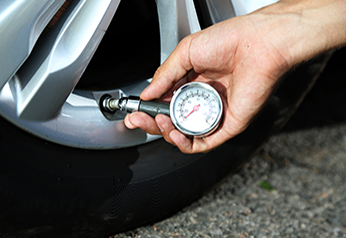
November 29, 2021
Tyre Repairs
Our tyres move us every day, so it's vital that they are reliable, durable and can withstand the challenges they will face whatever terrain you drive on.
Every time you go out for a drive, your tyres run the risk of being punctured, sustaining damage and going flat.
There is no avoiding it since we can't control what road conditions are like and what obstacles and debris are left behind.
So what to do when your tyres get damaged? Should you discard them and get a new set? Or get them repaired?
Check out this easy guide and FAQs on tyre repairs.
We've included helpful tips, reminders and valuable advice to keep you safe with every tyre repair.
Only rained personnel using the proper tools and procedures should repair your tyres.
If not done correctly, tyre repairs can get dangerous. Lives are at stake, so repairs should be taken seriously.
Not all tyres can be repaired.
To find out if your tyre is repairable, check your tyre's warranty and manufacturer's repair policy which you can find online or your owner's manual.
At Tyroola, we only recommend repairing your damaged tyres as long as you follow the guidelines and procedures adopted and set by the Australian Tyre Manufacturers Association.
Sticking to the guidelines will prevent accidents that can make the vehicle that you drive unsafe.
Before you repair your tyres, you need to be sure they are worth fixing.
You also need to take into consideration if it is still legal to get them repaired. In Australia, it is currently illegal to repair - and drive - tyres that have the following conditions:
-
Tread depth is below 1.6mm
-
Tread punctures are greater than 6mm
Use only Industry recommended repair methods.
Two-piece stem and patch repair components - also known as plug and patch One-piece patch/stem combination repair units.
Multi-puncture repairs
Only repair tyres with multiple punctures if they are at least 16 inches away from each other. If the holes are closer together, do not repair the tyre and get a new one.
Repair units should never overlap.
If your repaired tyre sustains additional damage which affects or compromises the previously repaired area, please do not try to fix the tyre anymore.
The number of repairs needs to be limited by the tyre manufacturer's recommendations and repair policy or as determined by the inspection process.
Run-flat tyre repairs
Some run-flat technology tyres cannot be fixed or repaired. Consult tyre manufacturer for their repair policy.
Always remove the tyre from the rim/wheel and vehicle
Never perform a tyre repair without removing the tyre from the rim/wheel to conduct an internal inspection.
It might seem like extra work but well worth it when your safety is at stake.
What causes flat tyres?
There are many potential causes for a flat tyre, the most common being punctures. Other causes may include:
- Vehicle collisions.
- Wear and tear
- Valve damage
- Blowouts
When are tyres repairable, and when should they be replaced?
-
To Repair
The only kind of tyre problem that can get repaired is a puncture and only when it is located in the centre of the tread area.
But if your punctures are located in the shoulder or sidewall of your tyre, it is unrepairable. - To Replace
1. When your tyre tread is almost 1.6mm and below.
2. Any tyre with bubbles and bulges on its outer tread and sidewalls.
3. Cuts or cracks on your sidewalls.
4.Deeply embedded road debris such as nails, stones, sharp rocks and more.
5. Broken valve caps
6. Tyre tread damage due to poor driving habits and lack of tyre maintenance.
7. Tyres involved in major accidents
8. Tyres with visible internal wires
9. Tyres with separated tread or significant cuts and lacerations.
Is it worth repairing a tyre puncture?
Repairing a punctured tyre may be worth it for some; if it is eligible for repair and done by a reputable tyre repair specialist.
Safety reminder, though - repairing your tyre this way can either allow you to use it for a long time post-repair, or it can just be a temporary quick fix.
The materials used for stems and patches might also not hold in colder temperatures leading to road safety concerns.
It is the last resort, especially in situations with no other options, like if you are far from the nearest tyre repair service centre.
Tyre Repairs: Step by Step
Remove the tyre from the wheel.
Your tyre service professional or technician must remove the tyre from the wheel so the inside - or what part needs repairing - be it the shoulder, sidewalls or centre tread - can be thoroughly examined.
Prepare the injured area.
Remove the cause of the puncture and clear out the edges of the damaged tread.
Fill the damaged cavity.
Use a suitable vulcanising material or rubber stem to fill the injury and keep moisture out.
Use a patch repair unit.
The tyre's inner liner, if left unopened, will leak. Seal the inner liner completely with a patch repair unit to prevent air loss
Re-inspect the finished repair
Before returning the tyre to the wheel and your vehicle, do a final check to ensure the patch repair has dried and is in the proper place.
If you need brand new replacement tyres, visit Tyroola for a wide range of passenger and commercial vehicle tyres.



